Traditional pets like dogs and cats become our babies, but it’s the allure of the exotic, the rare, and sometimes the downright eccentric that captures our imaginations. But be warned: these unconventional creatures come with price tags as extravagant as their pedigrees. They’re not just pets; they’re living status symbols, cultural artifacts that offer a glimpse into a world where luxury knows no bounds.
1. The Savannah Cat

A beguiling blend of domestic cat and African serval, the Savannah cat is a marvel of both aesthetics and economics. Sleek and spotted, these felines can set you back anywhere from $1,000 to $20,000, depending on their filial generation. According to Dr. Sarah Hartwell, a feline genetics expert, their high cost stems from the complex breeding process that requires careful lineage tracking. Not merely a pet, owning a Savannah is a statement about your appreciation for the exotic and your willingness to invest in that which defies convention.
With wild blood coursing through their veins, Savannah cats demand more than the average cat owner might expect. They’re active, intelligent, and sometimes unpredictable, requiring environments that stimulate their primal instincts. Imagine a small, spotted leopard lounging on your sofa—it’s a conversation starter, an emblem of your fearless style. But with great beauty comes great responsibility; these cats need stimulation to match their wild heritage, lest they turn your home into their personal jungle gym.
2. The Tibetan Mastiff
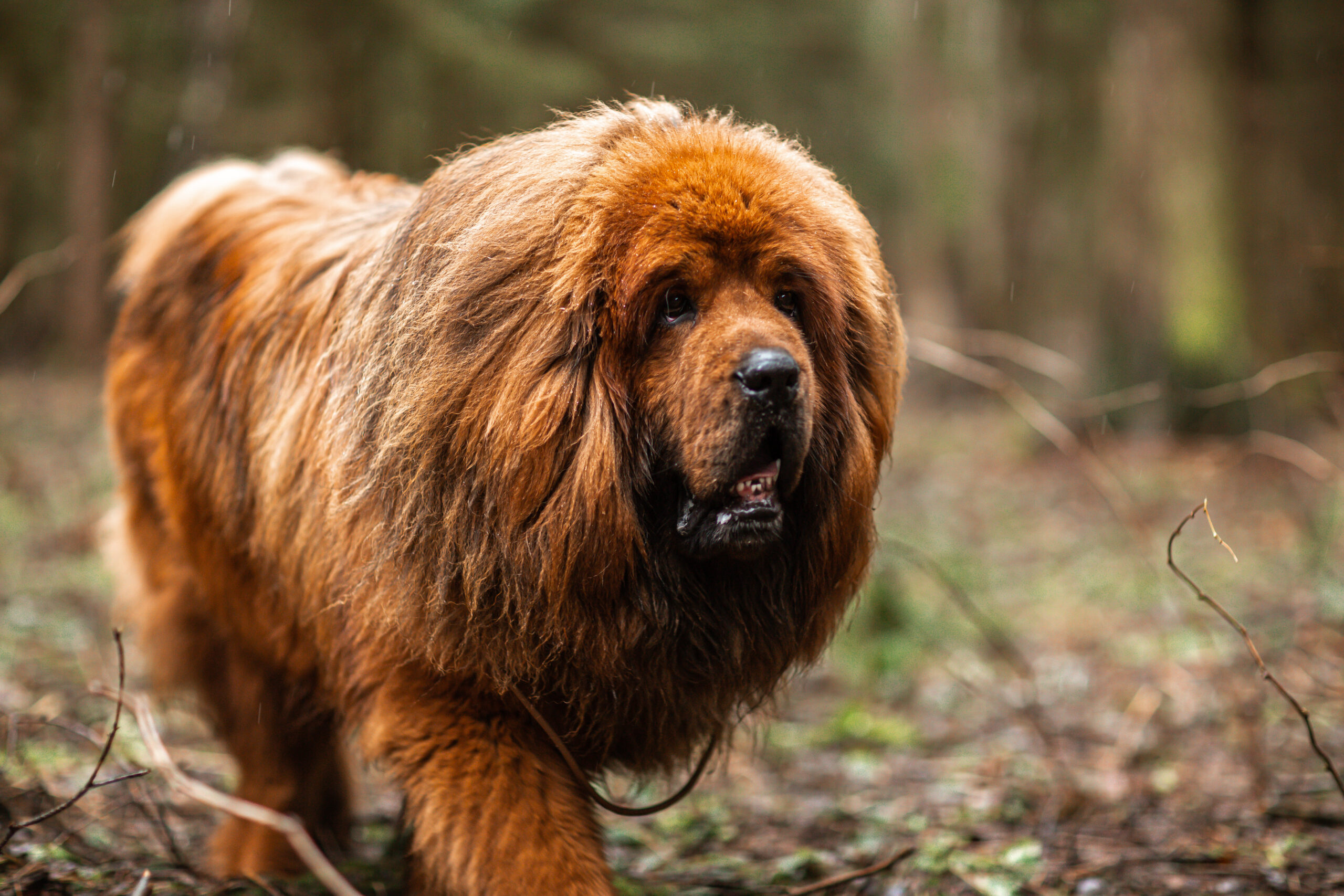
Towering at impressive heights, the Tibetan Mastiff is not your average guard dog. This ancient breed, known for its lion-like mane and formidable presence, can command prices upwards of $10,000. But in China, where they’re symbols of wealth and status, prices have been known to skyrocket into the millions. Owning one is less about companionship and more about showcasing your affinity for opulence.
These gentle giants require a home that matches their grand stature—both in size and luxury. Their aloof nature means they’re not begging for attention, but rather, they command respect. Consider this a pet for the discerning collector of all things extraordinary, someone who values history, prestige, and the occasional reminder of what it means to harness raw, untamed beauty. And should you choose to welcome one into your home, be prepared for the curious glances and admiring whispers that follow.
3. The Palm Cockatoo
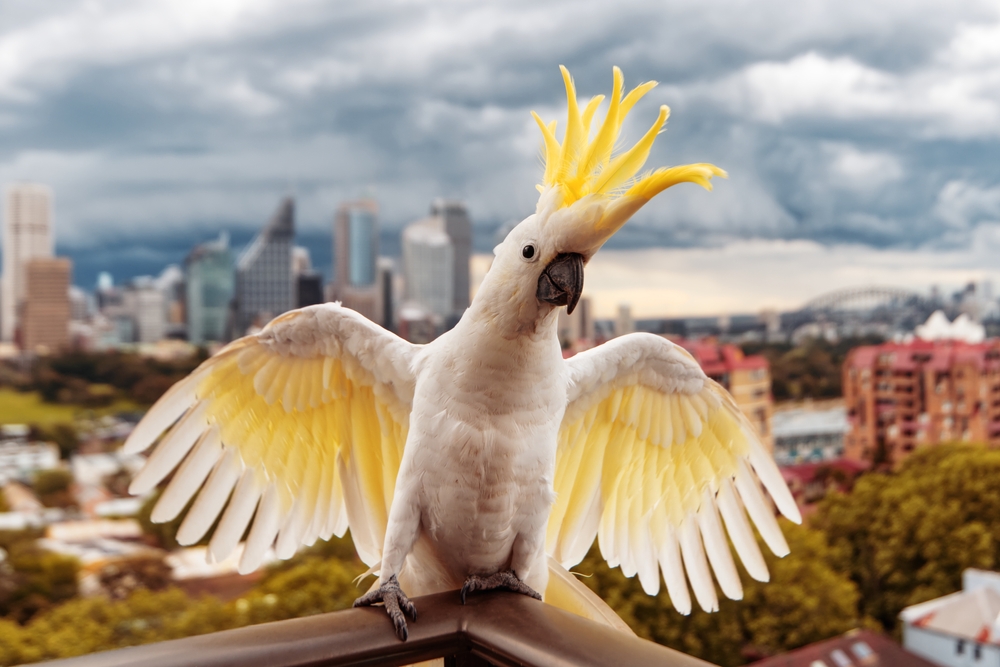
With its striking black plumage and magnificent red cheek patches, the Palm Cockatoo is a bird that screams rarity. As one of the largest cockatoos, its price tag is similarly impressive, often reaching $16,000. Dr. Irene Pepperberg, renowned for her work with avian cognition, notes that these birds are not only captivating for their appearance but also for their intelligence and ability to mimic human speech. To own one is to engage in a daily tête-à-tête with a creature whose cognitive capabilities rival those of a young child.
But this isn’t a bird for the faint-hearted or the time-pressed. Palm Cockatoos require significant attention, mental stimulation, and a diet that echoes their natural habitat in the rainforests of Australia and New Guinea. They thrive on interaction and have been known to forge deep emotional bonds with their owners. If you’re ready to commit, you’ll find yourself with a companion who offers insight into the avian intellect and a taste of the exotic that few can rival.
4. The Hyacinth Macaw

Known for its breathtaking cobalt-blue feathers and formidable wingspan, the Hyacinth Macaw is the jewel of the avian world. At prices that can soar beyond $12,000, purchasing one is an investment in living art. More than just a visual wonder, these macaws are known for their gentle, affectionate nature and remarkable intelligence. Their beauty is matched only by their need for social interaction, turning owners into devoted caretakers.
Their expansive wings require ample space to spread, often necessitating custom aviaries that replicate their natural environments. This is a bird that demands your time, your attention, and a dedication to meeting its complex needs. Yet, the bond that forms is as vibrant as its feathers, a testament to your willingness to embrace a life less ordinary. With a Hyacinth Macaw, your life becomes a canvas, painted in shades of blue and highlighted by the echoes of a rainforest chorus.
5. The Stag Beetle

Perhaps the most unexpected entry on this list, the Stag Beetle captures the imagination of collectors with its prehistoric charm and imposing mandibles. Prices can range dramatically, with some rare specimens fetching over $89,000. Entomologist Dr. Arthur V. Evans suggests that their high value is attributed to their rarity, size, and the intricate breeding conditions required to maintain their lineage. They are a testament to the fascination with the miniature and the marvels of the insect world.
Owning a Stag Beetle is not about raising a pet in the traditional sense but more about curating a living exhibit. It’s an appreciation for the overlooked and the extraordinary, an insect that defies the mundane. Their enclosure becomes a microcosm of the world they once roamed, offering a glimpse into the distant past. For the collector of curiosities, the Stag Beetle is a conversation starter, a declaration of your appreciation for life’s often unseen wonders.
6. The White Lion Cub
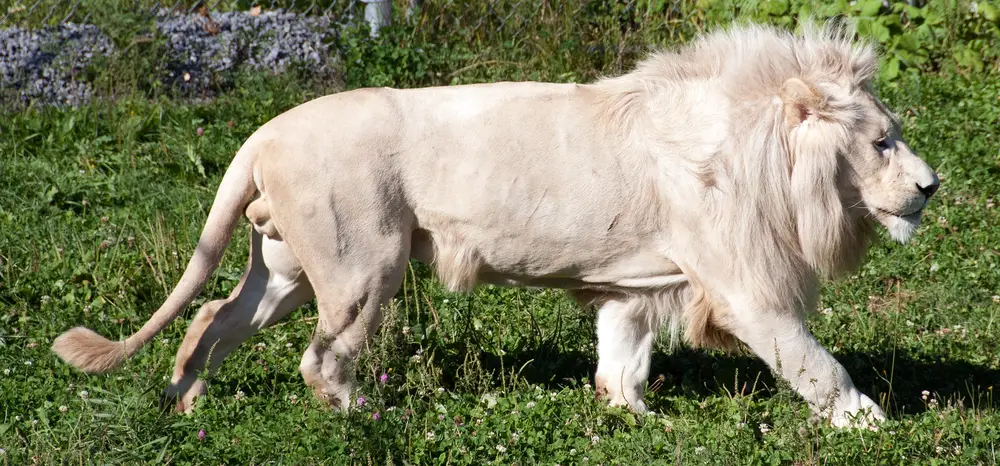
Owning a white lion cub is the ultimate expression of opulence and conservation wrapped in one majestic package. These rare creatures can cost upwards of $140,000, largely due to their scarcity and the ethical considerations surrounding their breeding. Their beauty is synonymous with rarity; each cub is a living relic of a genetics lottery few have the privilege to witness firsthand. They are luxury personified, a symbol of untamed beauty that demands both admiration and respect.
But the allure of a white lion cub is matched by the ethical and logistical challenges of ownership. These aren’t pets that thrive in just any home; they require spaces that mimic the savannahs they’re native to. And with the global conversation around conservation growing louder, owning one is also a statement about your commitment to preserving the natural world. It’s a delicate balance of indulgence and responsibility, a testament to one’s ability to steward the sublime responsibly.
7. The Chimpanzee
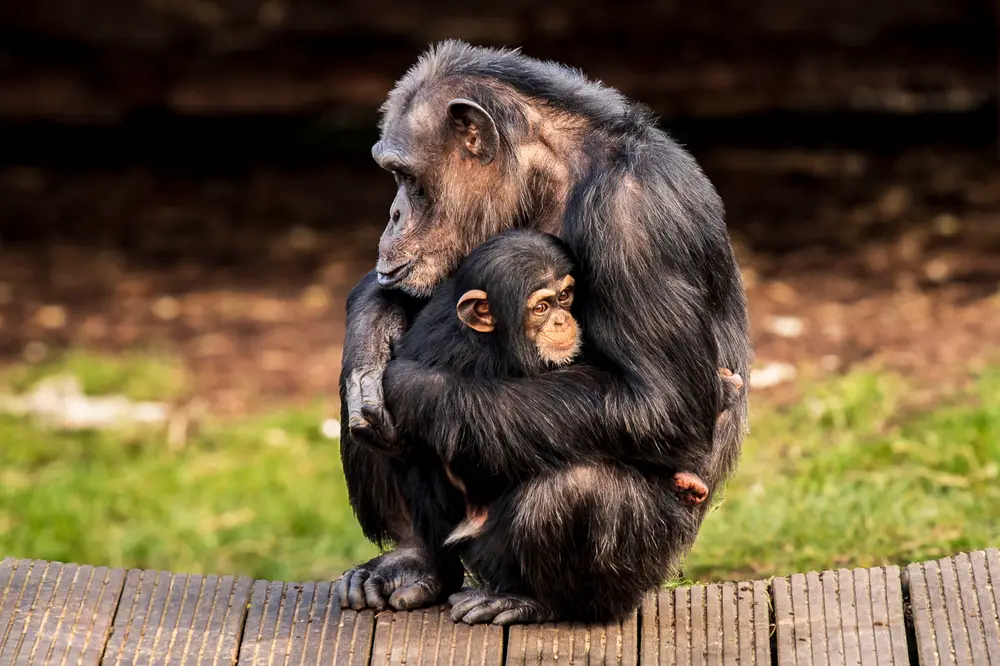
With their expressive faces and human-like behaviors, chimpanzees offer an intimate look into the mirror of our own evolution. However, this privilege comes with a steep price, often exceeding $60,000. According to Dr. Jane Goodall’s pioneering research on primates, their close genetic ties to humans make them both fascinating and ethically complex companions. To own one is to embrace a relationship that challenges the boundaries of human-animal interaction.
Chimpanzees require an environment that supports their complex social and psychological needs, often making them a choice for the most dedicated and informed of owners. They are not just pets but companions that require a lifetime commitment to care and enrichment. Their intelligence is a constant reminder of the thin line that separates us from the animal kingdom, and owning one is an invitation to explore that boundary. It’s a journey into the depths of empathy, connection, and the shared elements of our biological heritage.
8. The Arabian Horse

With its arched neck and flowing mane, the Arabian horse is an icon of equine elegance and strength. Prices can easily reach $100,000 or more, reflecting their storied history and prized bloodlines. They are the embodiment of grace and endurance, a living testament to the art of horse breeding. Beyond their physical beauty, Arabians are known for their intelligence and spirited nature, making them both a challenge and a joy to own.
To ride an Arabian is to partake in a tradition that spans centuries, a nod to the ancient cultures that revered them as treasures. These horses require a commitment to training and care that matches their noble lineage. It’s not just about the ride; it’s about connecting with a creature that has been part of human history since time immemorial. Owning an Arabian horse is a dance between heritage and horsemanship, a partnership that’s as rewarding as it is demanding.
9. The Bengal Cat

Bengal cats, with their leopard-like spots and playful demeanor, command prices that range from $1,000 to $25,000. Their allure is in their wild appearance coupled with a domestic temperament, a striking combination that captivates cat lovers worldwide. They are a testament to the beauty of hybrid vigor, a reminder that nature’s palette can be both bold and harmonious.
While Bengals are stunning to behold, they require more than just admiration; they thrive on interaction and physical activity. Their curious nature and high energy levels mean they need environments where they can explore and engage. It’s a commitment to nurturing their wild spirit in a way that respects their need for both freedom and companionship. When you invite a Bengal into your life, you’re not just getting a pet; you’re bringing home a small, majestic piece of the wild.
10. The Lavender Albino Ball Python

In the world of exotic reptiles, the Lavender Albino Ball Python stands out for its unique coloration and gentle temperament. Prices can range from $1,000 to $40,000, making it a sought-after specimen for collectors of the unusual. Its pastel hues and intriguing patterns are a testament to the wonders of genetic variation, a living work of art that slithers silently through your home.
These pythons are relatively low-maintenance, but their rarity calls for a knowledgeable owner who appreciates their subtle beauty. They require carefully controlled environments to ensure their health and longevity. Embracing the unconventional, they offer a glimpse into a world where nature’s creativity knows no bounds. If you dare to own one, you’re stepping into a narrative that blends the exotic with the everyday, a commitment to the extraordinary in reptilian form.
11. The Capuchin Monkey
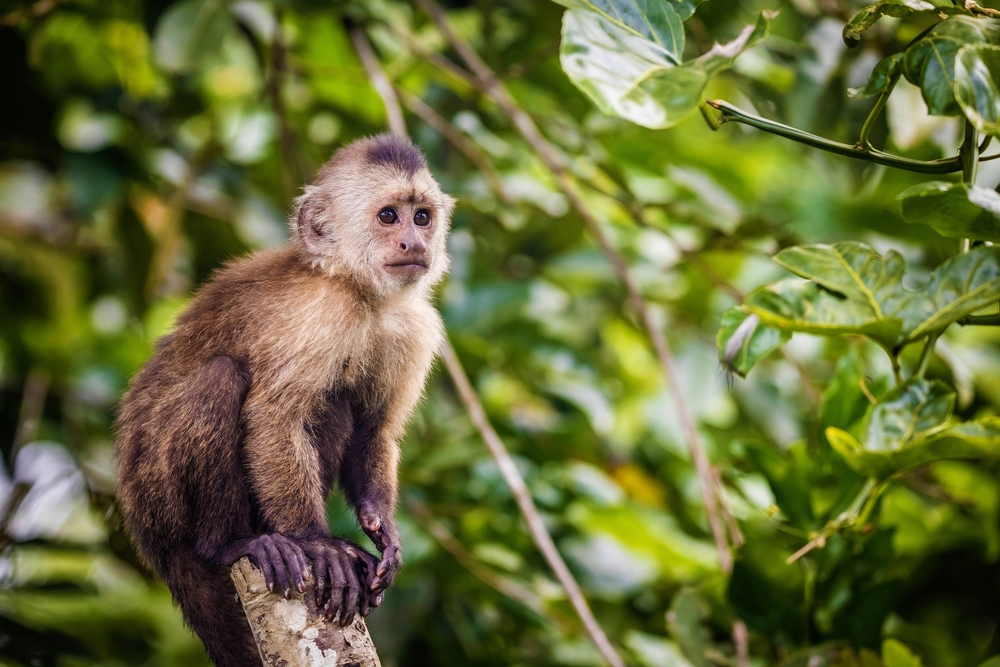
With their inquisitive eyes and dexterous hands, capuchin monkeys have long captured the human imagination. They come with a price tag that can exceed $10,000, a reflection of their rarity and the complexity of their care. Owning a capuchin is an invitation into a world of perpetual curiosity and mimicry, a chance to observe the behaviors that make them both endearing and challenging.
Capuchins require environments that stimulate their intellect and accommodate their social needs. They are not just pets; they are companions that form deep emotional bonds with their human families. The decision to bring one into your home is not to be taken lightly, as they demand not only your time but also your respect for their unique place in the animal kingdom. Owning a capuchin is a commitment to understanding and celebrating the nuanced dance of connection between species.
12. The Koi Fish
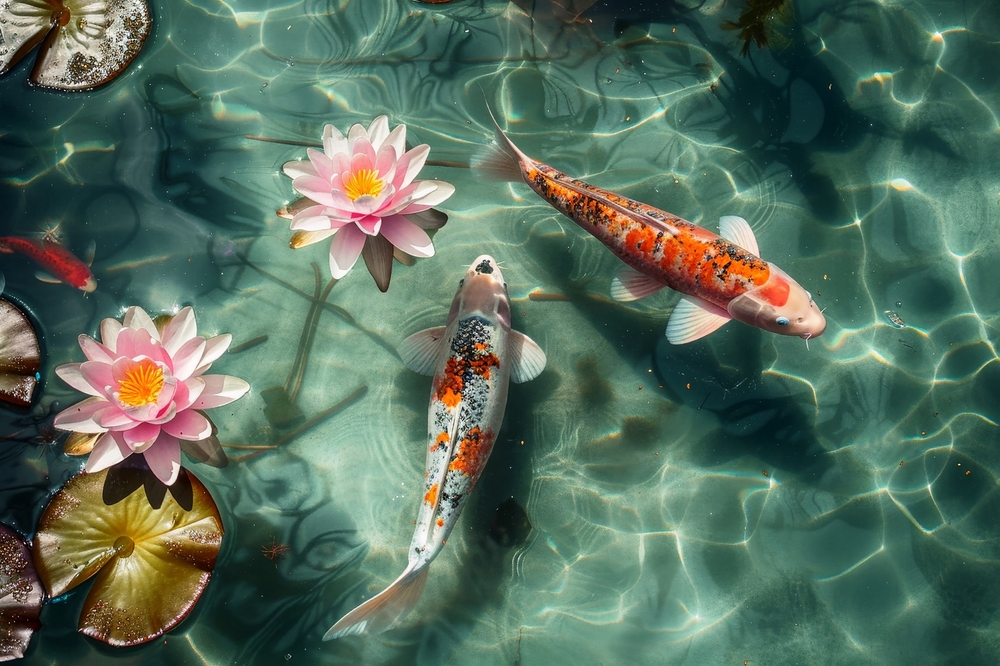
In the serene world of ponds and water gardens, koi fish reign supreme as symbols of peace, prosperity, and beauty. The price for these aquatic jewels can soar to $1.8 million for the most exquisite specimens, making them a luxury item for the discerning collector. Their vibrant colors and graceful movements are a dance of nature’s artistry, a reminder of the tranquility that water brings to life.
Caring for koi requires more than a simple pond; it necessitates a well-maintained aquatic environment that supports their health and displays their splendor. Each fish becomes a stroke in a living masterpiece, a testament to your ability to cultivate nature’s wonders. The koi is more than a pet; it’s an ongoing relationship with the water, an invitation to reflect on the beauty of stillness and the art of patience.
13. The De Brazza’s Monkey
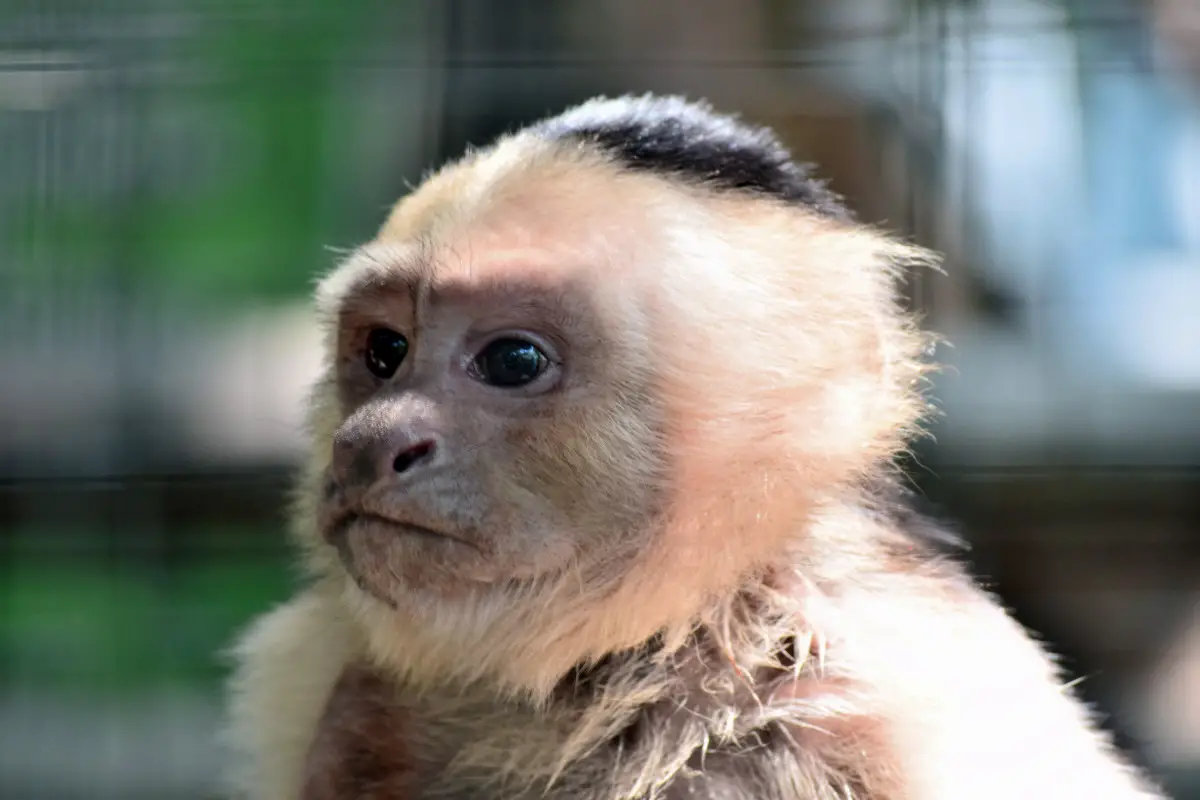
With its striking white beard and vibrant orange crest, the De Brazza’s monkey is a symbol of both elegance and rarity. Prices often exceed $10,000, reflecting their status as one of the most sought-after exotic primates. Known for their elusive nature and complex social structures, they’re a choice for those who appreciate the intricate dance of primate behavior.
Owning a De Brazza’s monkey requires a commitment to replicating their complex social environments. They are intelligent and sensitive, needing both time and space to flourish. This isn’t a pet for the casual owner; it’s a lifelong partnership with an animal that challenges you to understand and embrace its innate complexity. Bringing one into your home is a pledge to honor the unique tapestry of life, a journey into the depths of primate wisdom.
14. The Sphinx Cat
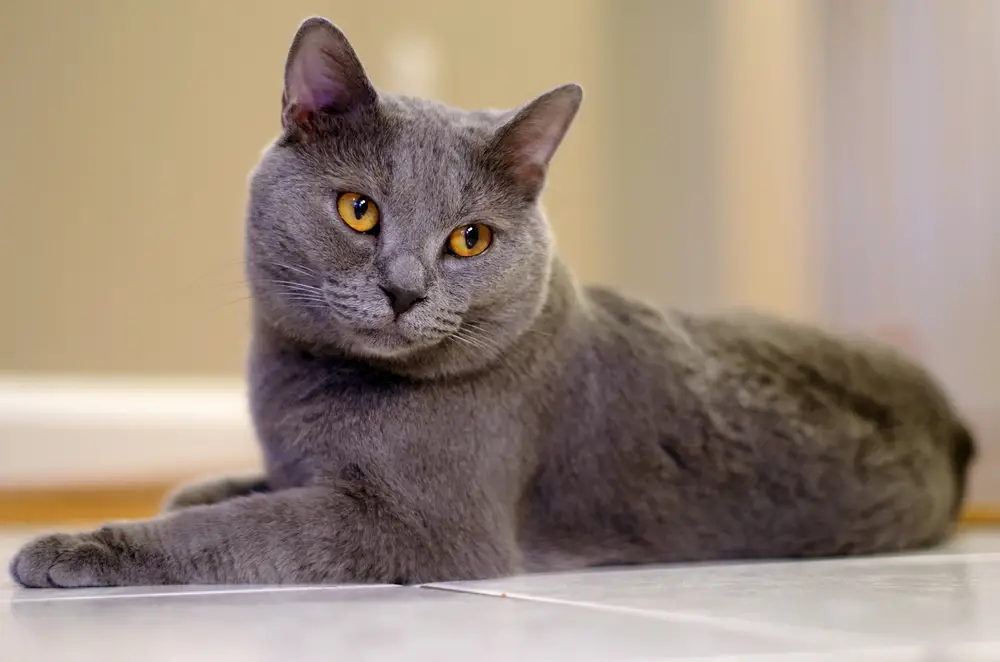
With its hairless body and otherworldly appearance, the Sphinx cat is a creature that defies conventional beauty. Prices can range from $1,500 to $3,000, reflecting the breed’s unique appeal and the specialized care they require. Their lack of fur means they’re hypoallergenic, a boon for allergy sufferers seeking feline companionship.
These cats are known for their affectionate nature and playful personalities, making them an engaging addition to any home. They require regular bathing to maintain their skin health, a small price to pay for the joy of their company. The Sphinx is more than just a pet; it’s a living sculpture, a testament to the diversity of feline form. Owning one is a celebration of the unconventional, a nod to the beauty found in the unexpected.
15. The Sugar Glider

Tiny yet mighty, sugar gliders are marsupials that offer a unique blend of cuteness and curiosity. Prices can range from $200 to $4,000, depending on their lineage and coloring. Their ability to glide through the air makes them a living spectacle, a testament to the wonders of evolutionary adaptation.
Caring for a sugar glider requires dedication to their dietary and social needs, as they are highly social creatures. They thrive in environments that allow for exploration and interaction, making them ideal for owners who embrace the whimsical. Owning a sugar glider is an invitation to witness the playful side of nature, a reminder that the smallest creatures can bring the greatest joys. It’s a commitment to nurturing the delicate balance between freedom and companionship, a dance of trust and delight.
